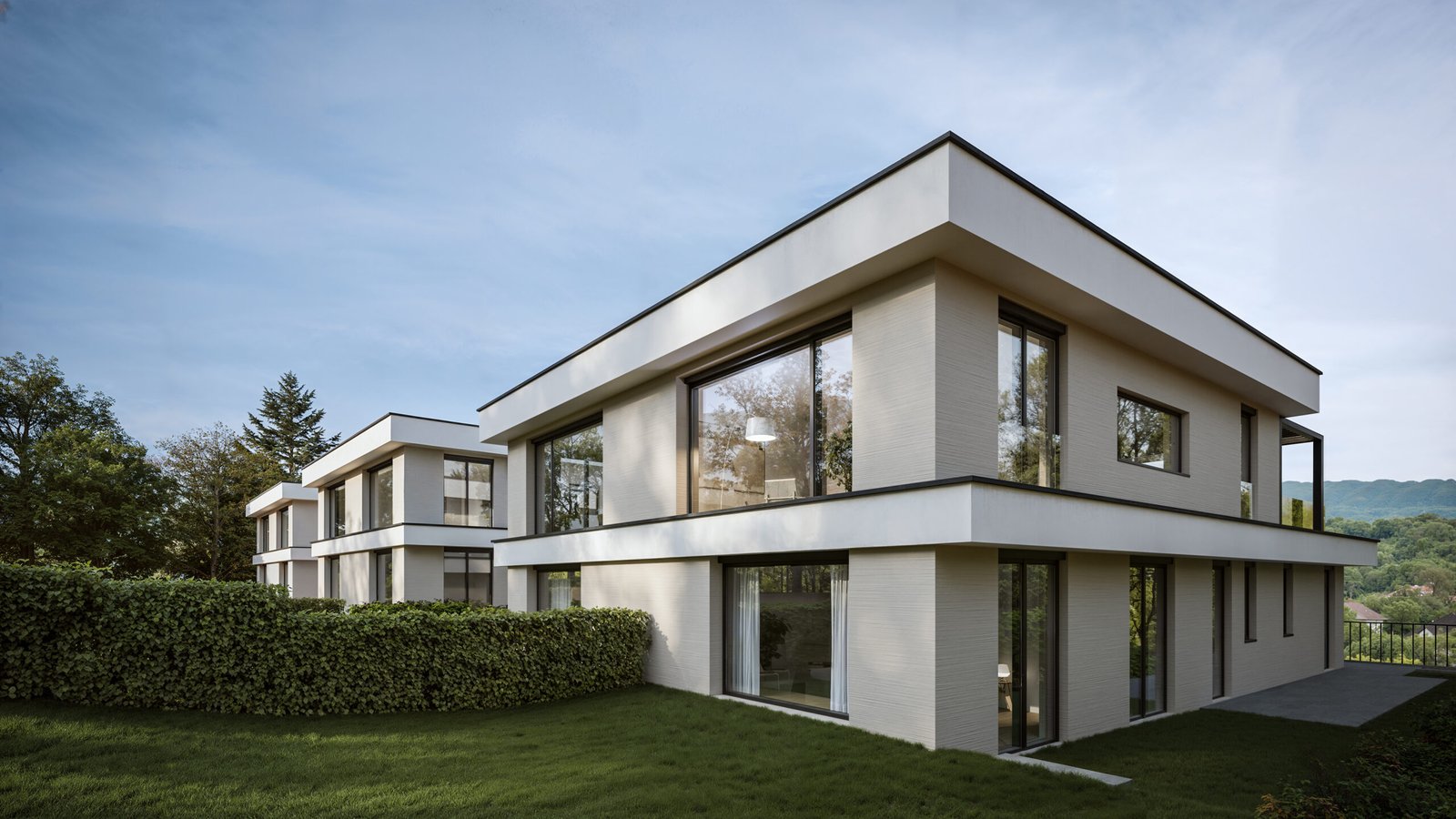If you have been in the architectural market for a long time, or if you have enthusiastically laid the foundations for your startup, you must be no stranger to the common threw around marketing strategy known as branding.
If you are wondering or need clarification about its parameters, branding refers to building a distinct presence for your firm. This allows clients to distinguish your firm from those of your competitors.
The current industry requires architectural firms to work hard on their brand’s presence, both online and offline. Have you ever wondered why some firms take time off to rebrand? This is because branding can completely alter and change the way clients perceive, remember, and recall your brand.
This article will explore key branding elements, strategies, and common pitfalls to avoid when setting up a creative and distinct image for your architectural firm. We have compiled a detailed and comprehensive guide specifically tailored to your concerns and queries regarding branding.
Assessing Architectural Firm Industry
Like almost all marketing strategies, branding begins with examining the already existing marketing trends and extrapolating future changes in client behaviour.
You may be wondering as to why this additional step is necessary. This is because this analysis will allow you to collect first-hand data on the market. This data will then be utilised to adjust the branding strategy based on the tastes and preferences of the target audience.
1. Market Research
Imagine setting up a bakery and selling the same products as your competitors without offering anything unique and compelling to your customers. The chances of success must be low, right?
The architectural industry is diverse and varied in its size and the kind of services it offers. From small-scale boutiques to large multinational corporations, the competition is at an all-time high. This competitive landscape also presents the common problem of oversaturation.
To combat oversaturation, conducting thorough market research and analyzing marketing trends and strategies employed by your competitors will give you a considerable edge over others competing in the market.
Similarly, finding a unique selling point for your architectural firm and repeatedly emphasizing it through visual and social media presence will attract customers looking for similar designs and architectural models catered to their specific demands and criteria.
2. Target audience
You must have wondered why defining a target audience is so important. From designing online and offline ads to color schemes and brand messaging, the target audience serves as a leading, decisive factor.
Without knowing the age, demographics, interest, and past shopping trends of your target clients, any amount spent on extensive branding is practically a waste.
Without establishing the taste and preference of your target audience, your architectural firm and subsequent branding will lack significant focus and direction. It will, thus, be detrimental to its longterm growth and success.
For instance, if you want to target the age demographic ranging from the early twenties to mid-thirties, your designs must reflect the latest trends and incorporate modern elements that attract the relevant age group. Failure to do so will shift your audience to your competitors offering appropriate services.
3. Unique Selling Point
As hinted at briefly before, to overcome the problem of oversaturation, your architectural firm must offer a distinctive selling point. This should be something that distinguishes your brand’s taste and identity from that of other firms in the market.
Whether your designs and architectural models are chic or avant-garde, directing your focus on a specific niche within the architectural industry is enough to give you an edge over others in the industry.
For example, with the growing interest in environmental policies and change over the last few decades, many architectural firms have come up with the model of sustainable or green architecture.
While you may adapt similar models, it is important to first ask yourself some important questions. What was your original vision when starting the firm? What do you want potential clients to feel about your brand? What type of clients do you wish to entertain?
Asking such open ended questions will leave you with a brain dump with clear, brilliant ideas that are true to your original architectural vision. Keep on guessing until you arrive on a single unique selling point that seamlessly blends your taste with that of your target audience.
Core Branding Features for Architectural Firms
Now that we have established a basic definition and understanding of branding, let’s examine some of its core elements in turn.
Branding elements include logos, designs, fonts, color schemes, and messages. These elements combine together to form a distinct identity for the brand.
However, it is equally essential for these core elements to be consistent across marketing platforms. Imagine using different fonts on your Instagram and website. Sounds like a marketing blunder, right? Read below to figure out how to fix that.
1. Brand Identity
Brand identity is the visual face of your brand; it is similar to first impressions. A client will look at design elements such as logo, font, color palette, and overall synchronization of these elements to determine whether they want to work with a firm.
One way of establishing a brand identity is through a thorough reevaluation of the services offered by your architectural firm.
For example, if most of your past portfolios and design models gravitate towards a minimalistic aesthetic, the logo and color palette should reflect a clean and sleek design with fewer distractions and minimal distraction by visual elements.
Mood boards and gathering your ideas and pictures in one place is a very useful technique for this purpose. Refer to your earlier data collection of the market and competitors, and refer back to your unique selling point for this step.
Hiring a skilled and experienced graphic designer for this job will cut your time and effort in half while offering quality.
2. Voice Tone
Social media and emails are the most popular ways of communicating with potential clients. It is essential to ensure that your brand messaging and communication are consistent throughout every interaction.
In your messages and interactions, avoid sounding overly enthusiastic or dull. Maintain a professional undertone and a convincing demeanor. Avoid using unduly complicated jargon that is incomprehensible to the reader you are trying to convince.
One of the most expensive mistakes you can ever make is to keep your potential clients waiting for a response for a considerable length of time. Imagine waiting for a reply yourself. Sounds pretty frustrating, right?
Language and choice of vocabulary should simultaneously be interlinked with the overall tone of your brand identity. For example, using short and fewer sentences can reinforce the idea of minimalism that we discussed earlier.
3. Branding Consistency
Consistency is like that one ingredient that is crucial to the success of the entire recipe. Without this magical ingredient, everything else is practically useless.
Consistency, especially in the context of branding, does not only mean posting and communicating with potential clients on a regular basis. It also implies eliciting clear, defined branding signals.
Each of the core branding elements discussed above, including logos, typography, color scheme, communication, and graphics, should be in harmony.
For instance, avoid using multiple colors with various undertones on your online and offline marketing fronts, such as your social media, website, and your office. Similarly, avoid changing font sizes between posts, brochures, and ads.
These apparently minor blunders have the potential to derail the success of your marketing strategy significantly. Consistent messaging, branding, and graphics can simultaneously elevate the visual presence of your architectural firm.
Branding Tips for Architectural Firms
Now that we have all the required ingredients for the recipe, let us look at how to combine them to produce the final product.
Merely knowing what core branding elements are is not enough for application. You will need a comprehensive guide and valuable tips to blend these elements in a carefully drawn out plan.
If this got you curious, read below for our top tips on where to take your first step and create an engaging marketing strategy for your architectural firm.
1. Identify Brand Emotions
Take a moment, sit back, and ask yourself the following questions as a starting point. What do you want people to feel when they look at your brand? What kind of emotions do you want your work to evoke?
A firm that prefers to work on cozy, suburban designs would seek to evoke a similar feeling of calm and comfort in their potential buyers. Therefore, their social media fronts will be draped in soft and warm colors to mimic the cozy atmosphere of their designs.
This starting point will help you put all other core elements into a specific niche. Focusing on feelings will also make sure that your clients feel emotionally stimulated and connected to the designs that you are offering.
2. Clearly Define Brand Persona
To understand this point, think of your brand as a specific individual. You would want to know their name, what they look like, the way they communicate, and most importantly, a memorable quality about them that makes recalling them easier.
A brand is your palette, a blank canvas that can be painted any way you prefer. Based on previously conducted market research and target audience analysis, you must blend the core branding elements in a manner that establishes a unique brand persona.
3. Target Audience
Speaking of a target audience, we have already made you aware of the importance of knowing the demographics and lifestyle preferences of the category of clients you seek to impress.
The purpose of reiterating this point is to make you highly sensitive to its overall importance for the health of your brand. Not knowing who to target will deprive you of the right to ask how to target.
Therefore, use both primary and secondary sources of research to get a good grasp on the consumer choices of your targeted customers. You may use questionnaires, interviews, and focus groups for this task.
4. Visual Identity System
Whether your visual identity is modern, traditional, industrial, or minimalist, it should be consistently spread across your online and offline marketing fronts.
Your visual identity should be easily recognizable. You can not appear both minimalist and maximalist.
On that note, avoid confusing clients with mixed, confused signals. An incoherent visual identity will be enough to drive them away and lose to another competitor in the market, one that values consistency.
5. Track Performance
Just as an effective communication cycle is incomplete without constructive feedback, a branding strategy is ineffective without tracking performance.
Tracking performance at regular intervals is crucial to the success of your branding strategy. Failure to do so will force you to overlook past mistakes and potential areas of improvement.
NPS, or Net Parameter Score, is one such parameter that can help you track performance of your branding strategy. This metric shows how often your clients recommend your company to others. This indicates customer loyalty.
A successful branding strategy will typically have a high NPS. Brands that are recognisable and can be easily recalled due to excellent branding are more likely to be recommended to others.
6. Collaborating with Partners
It is a known fact that working with people with similar mindsets decreases instances of conflicts and increases chances of agreement and quick action.
Who you choose to work with speaks just about as much of your own personal brand. Selecting partners that value quality and consumer preference will improve your brand image.
Similarly, selecting partners allows you to present your brand to their consumer base and vice versa. Therefore carefully analyzing the demographics of their target audience and comparing it to your own will help you in making an informed decision.
Brand Presence for Architectural Firms
We have already briefly touched upon the visual presence of your brand across marketing platforms. Now, we shall go into detail to create a distinction between online and offline brand presence protocols.
1. Online Presence
We live in a tech-savvy, digital age. Just about every age group now has a digital device that allows them to scroll across platforms such as Facebook, Instagram, YouTube, TikTok, and the popular search engine Google.
Building an online presence on these platforms entails building an optimal profile, followers, and reach. It is not just required that people follow you; they must also engage with your content on a regular basis to improve your profile stats.
Email marketing, website, and virtual portfolio are also equally important. Clients who value quality time are more likely to respond to such platforms. In the case of a website, apart from graphics and visuals, focus on functionality as well.
Your portfolio must combine high-quality graphics with virtual tours to give the impression of a visually aesthetic and immersive design compilation. Priortize quality, innovation, and creativity when it comes to your online marketing fronts.
You may want to invest in Pay-Per-Click (PPC) and Meta Ads in order to extend your reach to a new target audience base.
2. Offline Presence
Offline suggests visual sights that can be visited in person. This includes your office and its interior, brochures, design models, networking events, and client referrals.
Your office interior and atmosphere should be a silent speaker for your architectural vision and brand messaging. Colors, furniture, and staff should all be on one page. A welcoming space will engulf and convince the client to prefer your firm over your competitors.
Networking events are a great way to find potential partners and clients to work with. Participate often in panel discussions, hosting workshops, and relevant presentations to present your firm with a unified presence worthy of investment.
Building long-lasting relationships with clients is another crucial determinant. It is often said that it costs way less to keep an existing customer than to bring in a new one, as the process has to be repeated repeatedly through advertising.
Offering quality services, discounts, and follow-up notes are some of the ways to provide excellent customer service. This way, clients are more likely to refer your firm to others who are interested.
Common Pitfalls to Avoid when Branding for Architectural Firms
As much as you should concern yourself with what to do and how to do it, it is equally crucial to avoid what not to do in the case of branding for architectural firms.
Avoiding some of these commonly made mistakes listed below will save both time and energy, as well as speed up the process of client feedback and contracts.
1. Inconsistency
As we have been discussing, inconsistency is detrimental to the image and visual appeal of your brand.
Failure to harmonise branding elements leads to an inconsistent message that comes off as confusing to the potential client. A brand whose values align with the services they offer and the way those services are marketed always has higher chances of success and NPS.
Discuss every tiny detail with your team beforehand. Review and double-check all posts across marketing and social media platforms. Another great tip is to plan content ahead of time to avoid last-minute decision-making and changes.
2. Miscommunication
Take, for example, a brand that promotes sustainable and eco-friendly architectural designs and practices on its website yet posts conflicting designs on its Instagram that do not align with the parameters of sustainability.
How would you feel about such a firm as a potential customer looking for firms prioritizing green architecture? Probably disappointment and remorse.
Therefore, it is vital to convey your brand vision in a clear and direct tone, with consistent messaging across all platforms. Your brand messaging should not conflict as it does not leave a favorable impression on the client.
3. Complicated Strategies
Overcomplicating your brand persona and story will make it hard to come up with consistent and specific ideas. The goal is to keep the story simple yet emotionally engaging.
If a client finds your tone incomprehensible, they will fail to relate to your brand’s story and idea. Failure to do so will significantly decrease their emotional response and, consequently, your firm’s conversion rates.
Conclusion
Branding your architectural firm can open new avenues for its growth and success. A significant bulk of our population has shifted to online mediums of communication and advertising. This change in viewership calls for new and improved ways of presenting one’s startup.
Through branding, you can appeal to your client’s taste, feelings and aesthetic preferences. Once a viewer feels emotionally connected to your brand story and vision, they are bound to turn into a long-term client and an asset to your firm.
By avoiding common pitfalls, branding can upgrade and refine your firm’s value against its competitors. Therefore, waste no time and start looking for experts to work with who can help brand/rebrand your architectural firm.
FAQs
Q. How can I appeal to both residential and commercial clients through branding?
While residential and commercial clients have different demands, you can create separate sections within your website and social media platforms with clear cues to lead each client to its desired separate portfolio.
Q. How do we measure the success of branding besides NPS?
Other metrics that can be used to assess the performance of the branding strategy would be website traffic, clicks, engagement on social media platforms, and conversion rates. Clients can also be asked to leave direct feedback through surveys and feedback forms.
Q. When do we consider rebranding our architectural firm?
Analyzing your stats will give you and your team a good enough idea regarding declining sales and engagement. If that is the case for some time, you may need to revise your brand vision and align core branding elements by incorporating changes.





